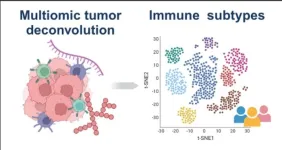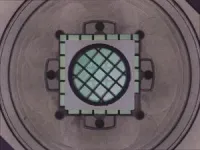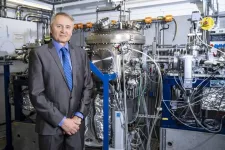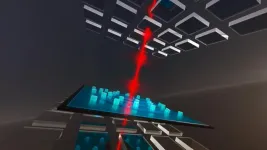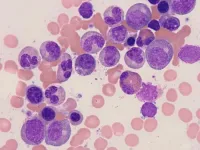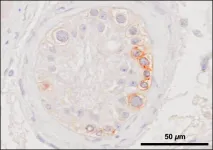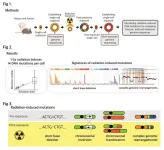Utilizing data from more than 1,000 tumors across 10 different cancers, the study is the first to integrate DNA, RNA, and proteomics (the study of proteins), revealing the complex interplay of immune cells in tumors. The data came from the Clinical Proteomic Tumor Analysis Consortium (CPTAC), a program under the National Cancer Institute.
"We aimed to improve our understanding of the mechanisms underlying the functional impairment of immune response in tumors. By closely examining genes and proteins in the tumor tissues, we discovered various patterns in immune activation and suppression," says Pei Wang, PhD, Professor of Genetics and Genomic Sciences at Icahn Mount Sinai, and the lead-corresponding author on the paper. "Our goal in unraveling these diverse immune subtypes is to help clinicians identify patient groups more responsive to immunotherapy. Revealing the specific pathways and cellular switches for each subtype can also spark new and creative ways to develop treatments."
"Each type of immune response was linked to changes in gene functions, such as how genes are modified, the messages they send, and the proteins they produce. By providing a comprehensive molecular fingerprint of the immune response in cancer, this study is expected to facilitate the development of future immunotherapy strategies," says Francesca Petralia, PhD, Assistant Professor of Genetics and Genomic Sciences at Icahn Mount Sinai, and co-corresponding author on the paper.
A key finding was that among seven subtypes identified through advanced statistical models, five included tumors from ten different types of cancer, suggesting shared immune responses across these tumors.
“When we see common immune responses and similar patterns in the way cells behave across various cancers within the same immune group, it hints that certain treatments that boost the immune system could work well for many types of cancer," says Dr. Wang.
A novel aspect of the research stems from the deep phosphoproteomic data generated for more than 1,000 tumors. This data allows researchers to see how proteins are modified. “With phosphoproteomic profiling of more than 1,000 pan-cancer tumors, we were able to computationally discover a set of key novel drug targets,” says Avi Ma’ayan, PhD, Professor, Pharmacological Sciences, Director of the Mount Sinai Center for Bioinformatics at Icahn Mount Sinai, and a senior author of the paper. “By targeting selected kinases with small molecules or other means, we may be able to convert tumors not responding to immunotherapies into tumors with better immune-therapy response.”
As part of the research, a machine-learning tool applied to digital pathology images also demonstrated correlations between different types of immune responses and the presence of certain immune cells, enhancing understanding of the environment in and around tumors.
Next, the investigators plan to validate their findings further and leverage insights in ongoing clinical studies focused on immunotherapies. This effort aims to streamline the development of biomarker panels for treatment responses and identify enhanced treatment strategies. Collaborative efforts within CPTAC are underway, including a proteogenomic study on molecular mechanisms underlying responses to immune checkpoint treatments in melanoma patients.
The paper is titled “Pan-Cancer Proteogenomics Characterization of Tumor Immunity.”
The Clinical Proteomic Tumor Analysis Consortium (CPTAC) is supported by the National Cancer Institute of the National Institutes of Health under award numbers U24CA210955, U24CA210985, U24CA210986, U24CA210954, U24CA210967, U24CA210972, U24CA210979, U24CA210993, U01CA214114, U01CA214116, U01CA214125, U24CA271114, U24CA270823. This project has also been funded in part with Federal funds from the National Cancer Institute, National Institutes of Health, under Contract No. HHSN261201500003I, Task Order No. HHSN26100064. Additional funding support was provided by NIH awards U24CA224260, U24CA264250, R33CA263705, P30ES017885, T32GM136542, 1F30CA265288, F30CA271622, HHMI Gilliam Fellowship GT15758; and Associazione Italiana Ricerca sul Cancro (AIRC) under IG 2018 - ID. 21846 and AIRC 5 per Mille 2018 - ID.21073. Pacific Northwest National Laboratory is operated for the Department of Energy by Battelle Memorial Institute under Contract DE-AC05-76RL01830.
Please see Cell [DOI: 10.1016/j.cell.2024.01.027] to view details on the remaining authors and competing interests.
-####-
About the Icahn School of Medicine at Mount Sinai
The Icahn School of Medicine at Mount Sinai is internationally renowned for its outstanding research, educational, and clinical care programs. It is the sole academic partner for the eight- member hospitals* of the Mount Sinai Health System, one of the largest academic health systems in the United States, providing care to a large and diverse patient population.
Ranked 13th nationwide in National Institutes of Health (NIH) funding and among the 99th percentile in research dollars per investigator according to the Association of American Medical Colleges, Icahn Mount Sinai has a talented, productive, and successful faculty. More than 3,000 full-time scientists, educators, and clinicians work within and across 44 academic departments and 36 multidisciplinary institutes, a structure that facilitates tremendous collaboration and synergy. Our emphasis on translational research and therapeutics is evident in such diverse areas as genomics/big data, virology, neuroscience, cardiology, geriatrics, as well as gastrointestinal and liver diseases.
Icahn Mount Sinai offers highly competitive MD, PhD, and Master’s degree programs, with current enrollment of approximately 1,300 students. It has the largest graduate medical education program in the country, with more than 2,000 clinical residents and fellows training throughout the Health System. In addition, more than 550 postdoctoral research fellows are in training within the Health System.
A culture of innovation and discovery permeates every Icahn Mount Sinai program. Mount Sinai’s technology transfer office, one of the largest in the country, partners with faculty and trainees to pursue optimal commercialization of intellectual property to ensure that Mount Sinai discoveries and innovations translate into healthcare products and services that benefit the public.
Icahn Mount Sinai’s commitment to breakthrough science and clinical care is enhanced by academic affiliations that supplement and complement the School’s programs.
Through the Mount Sinai Innovation Partners (MSIP), the Health System facilitates the real-world application and commercialization of medical breakthroughs made at Mount Sinai. Additionally, MSIP develops research partnerships with industry leaders such as Merck & Co., AstraZeneca, Novo Nordisk, and others.
The Icahn School of Medicine at Mount Sinai is located in New York City on the border between the Upper East Side and East Harlem, and classroom teaching takes place on a campus facing Central Park. Icahn Mount Sinai’s location offers many opportunities to interact with and care for diverse communities. Learning extends well beyond the borders of our physical campus, to the eight hospitals of the Mount Sinai Health System, our academic affiliates, and globally.
-------------------------------------------------------
* Mount Sinai Health System member hospitals: The Mount Sinai Hospital; Mount Sinai Beth Israel; Mount Sinai Brooklyn; Mount Sinai Morningside; Mount Sinai Queens; Mount Sinai South Nassau; Mount Sinai West; and New York Eye and Ear Infirmary of Mount Sinai.
END
